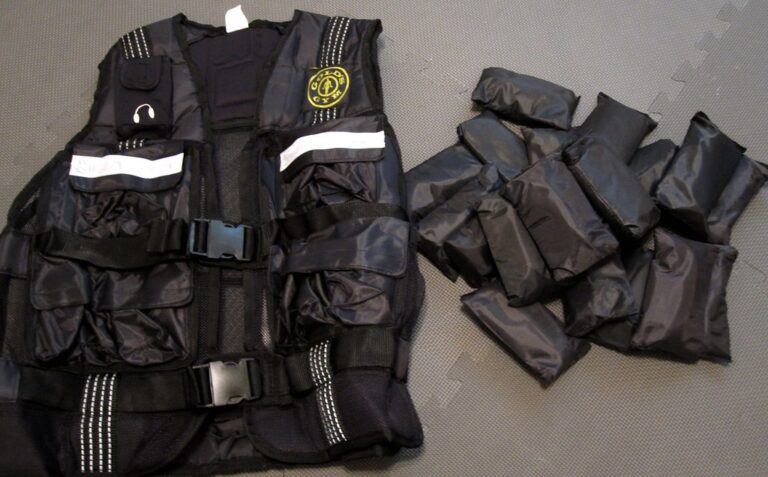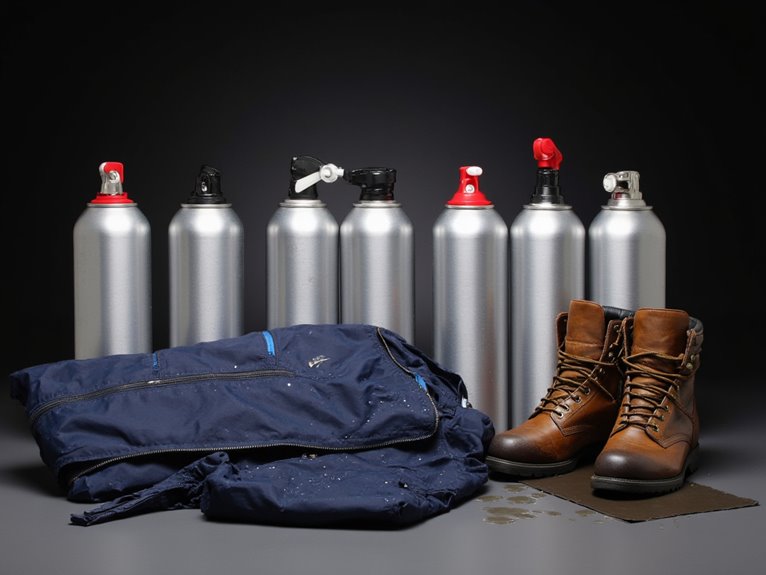The Ultimate Hut-to-Hut Hiking Packing List for an Unforgettable Adventure
Starting a hut-to-hut hike requires careful preparation. Pack merino wool for breathability, hiking socks for blister prevention, and convertible trousers for versatility. Wear a durable hiking shirt and insulating jacket. Shelter wisely with a lightweight tent or cozy hammock, sleeping bag, and pad. Equip with a multi-tool, medium backpack, and hydration system. Pack a map, compass, headlamp, and whistle for navigation. Purify water with tablets, boiling, or UV light. Bring flavor-packed food and a well-stocked first aid kit. Guarantee personal hygiene with travel-sized toiletries. Remember, there’s a lot more to enrich your adventure further.
We are supported by our audience. When you purchase through links on our site, we may earn an affiliate commission, at no extra cost for you. Learn more. Last update on 15th January 2026 / Images from Amazon Product Advertising API.
Clothing Essentials
When preparing for a hut-to-hut hiking adventure, it’s vital to carefully select clothing essentials that will keep you comfortable and protected on the trail. For a successful journey, I always opt for Merino wool base layers. Their breathability and moisture-wicking properties keep me dry and regulate my body temperature, whether I’m ascending a steep slope or taking in a scenic view. These base layers are a staple in my hiking clothes arsenal, providing the foundation for a comfortable trek.
To prevent blisters and make sure each step is cushioned, I never compromise on quality hiking socks. Opting for snug and cushioned pairs, my feet thank me as I navigate rocky paths and uneven terrain. A good pair of hiking socks is like a reliable companion, supporting you every step of the way.
Convertible zip-off trousers are a game-changer on the trail, especially when the weather is unpredictable. These versatile pants adapt seamlessly to changing conditions, allowing me to switch from pants to shorts with ease. Pairing these with a lightweight and durable hiking shirt that offers sun protection and ventilation ensures I stay cool and protected throughout the day.
When the mountain air turns chilly, an insulating jacket becomes my best friend. This essential piece of gear provides the warmth I need during breaks or when temperatures drop, making sure I stay cozy and ready for the next leg of the adventure.
Shelter and Sleeping Gear
As we navigate through the essentials of clothing for a hut-to-hut hiking adventure, the focus now shifts to ensuring comfort and rest with shelter and sleeping gear options. When it comes to shelter options, lightweight tents or cozy hammocks are ideal for a comfortable night’s sleep in the wilderness. A necessary sleeping bag is vital to keep you warm and snug during overnight stays in huts or shelters. Adding a sleeping bag liner can provide additional warmth and cleanliness.
To guarantee a restful night’s sleep, don’t overlook the importance of a good sleeping pad. This piece of gear will cushion your body from the hard ground, ensuring you wake up well-rested and ready for the next day’s adventure. Shelter and sleeping gear serve as loyal companions on your journey, providing comfort and rest in the midst of the great outdoors.
When selecting your gear, opt for lightweight tents or cozy hammocks based on your personal preference and the terrain you’ll be hiking through. Remember, the goal is to strike a balance between comfort and weight for ease of transport. So, equip yourself with the necessary tools for shelter and sleeping gear to improve your hut-to-hut hiking experience.
Hiking Gear and Accessories
I suggest including a handy multi-tool for versatility and practicality while hiking in changing terrain. A multi-tool can help with various tasks like tightening gear, cutting rope, or fixing equipment on the go. It’s a compact and essential item that can save the day in unexpected situations.
When packing for a hut-to-hut hiking adventure, a reliable medium-sized backpack with up to 40 liters capacity and a rain cover is essential. This backpack will comfortably carry all your gear while also protecting it from sudden downpours. Additionally, don’t forget to pack a lightweight sleeping bag for a restful night’s sleep at the huts. To keep your belongings organized within the backpack, lightweight stuff sacks are a must-have for efficient packing and easy access to your essentials.
In terms of accessories, consider carrying earplugs to ensure a peaceful night’s sleep in shared hut accommodations. Additionally, having a first aid kit is vital for addressing minor injuries or ailments while on the trail. Stay hydrated by packing a water bottle or a hydration system to replenish fluids during your hikes. These items are essential for a safe and enjoyable hut-to-hut hiking experience.
Armed with essential orientation tools like a reliable map and compass, I confidently embark on hut-to-hut hiking adventures, ensuring a safe and exciting journey through diverse terrains. The dependable map serves as my guiding light, providing a visual depiction of the landscape and key landmarks along the way. Teamed with a dependable compass, I can orient myself even in the most secluded locations, ensuring I remain on the correct path.
Exploration takes on a new level of thrill when equipped with tools that reveal hidden trails and secret paths. These resources not only add a sense of excitement but also enrich the overall experience of discovering unexplored territories. While intuition plays a role in orientation, having tangible orientation tools provides an extra layer of safety and security during the trek.
As the daylight fades and the stars appear, a headlamp becomes an invaluable companion for navigating the trails in low-light conditions. Its bright beam cuts through the darkness, lighting up the path ahead and ensuring a smooth shift into the night. Additionally, including a whistle in my gear offers peace of mind, knowing that I have a means of signaling distress in case of emergencies during my hut-to-hut hiking expeditions.
Hydration and Water Purification
Staying hydrated is crucial to my hiking success. I always pack a dependable water bottle and purification tablets to make certain I have access to clean water on the trail. Proper hydration keeps me energized and prepared for every adventure that comes my way.
Water Bottle Selection
Selecting a water bottle for hut-to-hut hiking requires careful consideration of factors like capacity, durability, and water purification features to guarantee a safe and enjoyable trek through rugged terrain. For best hydration on the trail, choose a lightweight and durable water bottle with a capacity of at least 1 liter. Look for bottles with built-in filters or plan to carry water purification tablets to make sure safe drinking water from natural sources. Opt for leak-proof bottles with wide mouths for easy refilling and cleaning during your hike. Additionally, consider insulated water bottles to keep your beverages at the desired temperature, whether you need them cold or hot along the way. Prioritize reliability and durability in your water bottle selection to withstand the challenges of outdoor adventures.
Purification Methods
When exploring the wilderness on hut-to-hut hikes, it is crucial to utilize efficient purification methods to guarantee safe hydration and water consumption throughout the journey. Lightweight water purification tablets are a must-have for treating water on the trail quickly and effectively. A portable water filter is handy for removing impurities from natural water sources, ensuring clean drinking water. In situations where tablets or filters are unavailable, boiling water is a reliable purification method that can kill harmful microorganisms. Iodine drops provide an alternative solution for water purification if needed. Additionally, UV light purifiers offer a convenient and speedy way to treat water on the go, making them a valuable tool for maintaining hydration during your hiking adventure.
Cooking and Food Supplies
When embarking on hut-to-hut hiking adventures, ensuring you have the correct cooking gear and food supplies is vital for a successful and enjoyable journey. A lightweight camping stove and fuel are essential for preparing hot meals at the huts. Along with the stove, pack utensils like a camping pot, spork, and a knife to aid in cooking and eating your meals conveniently.
For sustenance on the trail, pack dehydrated meals, instant noodles, and energy bars. These items are lightweight, easy to prepare, and provide the necessary nutrients for your trek. To add flavor and variety to your meals, consider bringing along spices, condiments, and tea bags. These small additions can make a significant difference in enhancing the taste of your food and keeping meal times enjoyable.
When planning your food supplies, take into account the duration of your hike and the cooking facilities available at the huts. Ensure you have enough food to sustain you throughout the journey, considering factors like energy expenditure and appetite changes during physical activity. By preparing adequately and packing the right cooking tools and food items, you can enhance your hut-to-hut hiking experience and enjoy delicious meals amidst breathtaking natural settings.
First Aid and Emergency Kit
When hitting the trails, it’s essential to pack essentials like bandages, antiseptic wipes, and medication for common ailments in your first aid kit. Don’t forget to include a whistle, signaling mirror, survival blanket, matches, and a multi-tool for unexpected situations that may arise. Ensuring your emergency kit is easily accessible can make a huge difference in handling injuries or emergencies during the hike.
Essential Medical Supplies
In preparing for hut-to-hut hiking, ensuring your medical kit is stocked with essential supplies is vital for any unforeseen emergencies on the trail. A complete first aid kit should contain bandages, antiseptic wipes, blister pads, and pain relievers to address common injuries. Emergency supplies like a whistle, emergency blanket, and a multi-tool are essential for unexpected situations. Don’t forget to pack prescription medications if needed, along with any personal medical information or allergy details. It’s also wise to include a compact CPR mask and a basic survival guide for emergencies. Consider adding tweezers, scissors, moleskin, and a thermometer to your medical kit for thorough preparedness during your hut-to-hut hiking adventure.
Emergency Contact Information
Guarantee your first aid kit is stocked with detailed emergency contact information, including local services and personal contacts, to promptly address any unexpected situations during your hut-to-hut hiking excursion. It’s essential to have a list of allergies, medical conditions, and medications in your emergency kit for quick reference in case of emergencies. Additionally, make sure your emergency contacts, such as family, friends, and local authorities, are easily accessible in your hiking pack. Your first aid kit should include essentials like bandages, antiseptic wipes, blister treatments, and pain relievers for immediate care. Having a well-prepared plan for emergency situations, including evacuation procedures and communication methods with authorities or rescue teams, is crucial for a safe and enjoyable hiking adventure.
First Aid Training Importance
During hut-to-hut hiking adventures, my confidence in handling emergencies is heightened by my thorough first aid training, which equips me to respond effectively in critical situations on the trail. Knowing how to administer basic first aid is vital for treating injuries or illnesses that may arise. Carrying properly packed first aid kits is imperative as they provide supplies to address minor injuries and manage unexpected medical emergencies. Understanding first aid principles helps me assess situations and make informed decisions when faced with health issues. Regularly updating my first aid knowledge and skills guarantees I am prepared to handle various medical scenarios while exploring the wilderness. Being well-prepared in first aid gives me peace of mind and allows me to focus on enjoying the adventure.
Personal Hygiene Items
Packing personal hygiene items for hut-to-hut hiking adventures requires careful consideration for space and convenience. When it comes to toiletries, choose travel-sized versions to save on backpack space. Don’t forget essentials like sunscreen to safeguard your skin from the sun’s harsh rays, face cream to keep your skin hydrated, and pocket soaps for quick cleaning sessions during the hike.
In addition to toiletries, make sure to pack painkillers, Imodium, and rehydration tablets for emergencies. These items can be a lifesaver if unexpected situations arise on the trail. Biodegradable wet wipes are also a must-have for keeping clean while minimizing your impact on the environment.
Since refuges typically provide tap water, carrying a reusable water bottle for hand-washing and drinking is a smart move. You’ll also find that hand-washing clothes in hut sinks is a common practice among hikers. This simple task can help you stay fresh and extend the usability of your hiking gear throughout your adventure. By packing these personal hygiene items thoughtfully, you can ensure a comfortable and enjoyable hut-to-hut hiking experience.
Safety Equipment
When embarking on hut-to-hut hiking expeditions, it is essential to outfit oneself with safety gear to navigate the trails with confidence and preparedness. A headlamp is a must-have item for any hiker, especially when night falls or when exploring caves or tunnels along the way. It provides visibility in low-light conditions, ensuring safe passage through tricky terrain.
Carrying a whistle is a simple yet vital safety precaution. In case of an emergency or getting lost, a whistle’s loud sound can alert others to your location much more effectively than yelling. It’s lightweight and takes up minimal space in your pack, making it a valuable tool for signaling distress.
A basic first aid kit is non-negotiable for any outdoor adventure. It should contain essentials like bandages, antiseptic wipes, pain relievers, and any personal medications you may need. Being prepared to address minor injuries can prevent them from becoming major issues while on the trail.
Having a multitool on hand is incredibly useful for various tasks and repairs that may arise during your hike. Whether it’s fixing gear, cutting bandages, or opening cans, a multitool can save the day in unexpected situations.
Lastly, packing a drybag is essential for protecting your gear and essentials from getting soaked in case of rain or water crossings. Keeping your important items dry can make a significant difference in your comfort and safety while on the trail.



